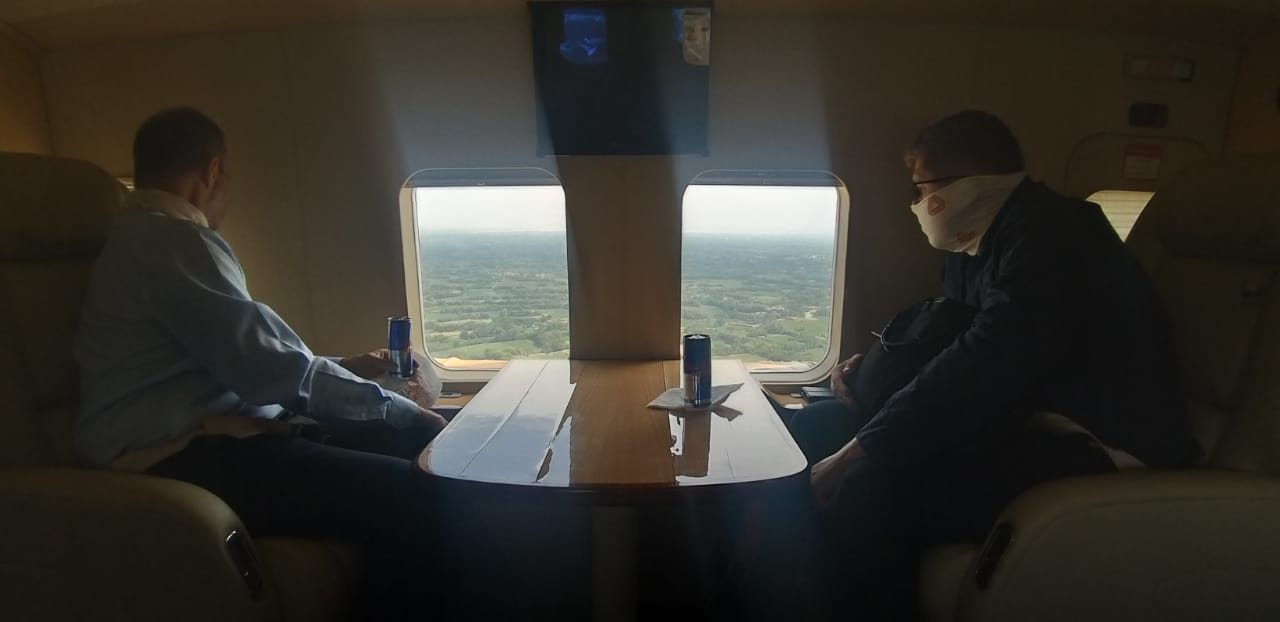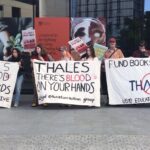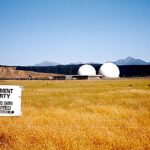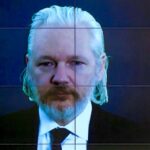Andrew Forrest, Australia’s second richest person, is on a self-declared global mission to fight climate change. But there’s another side to this story that’s rarely examined.
His company’s role in Afghanistan just before the Taliban takeover in August 2021 was exclusively investigated by Declassified Australia in February 2022. We can now detail more unreported details about the secret meeting in the presidential palace that facilitated Forrest’s company, Fortescue Minerals Group, securing access to vast swathes of the country for mineral and mine exploration in the dying months of the US-backed government.
Throughout 2020, at the height of the Covid pandemic, Forrest had travelled to some of the world’s most troubled nations including the Democratic Republic of Congo, Papua New Guinea and Afghanistan to secure resource projects.
Lithium was a focus of his trips since global demand has soared due to the growing use of electric cars and electronic equipment. Forrest has talked about opening his own lithium mines and Fortescue is exploring for viable deposits in South America, Portugal and Western Australia.
Forrest and his entourage arrived in Kabul, the capital of Afghanistan, in September 2020 to a country riven by conflict, corruption, extreme violence and insecurity.
On 10 September, Forrest signed a comprehensive agreement with then President Ashraf Ghani, in the presence of the Australian Ambassador designate to Afghanistan, Geoff Tooth, the Fortescue Future Industries CEO Julie Shuttleworth and the Afghan Minister of Mines Mohammed Haroon Chakhansuri. Also present was Amrullah Saleh, the First Vice President of the country, and Mohammad Sarwar Danish, the Second Vice President.
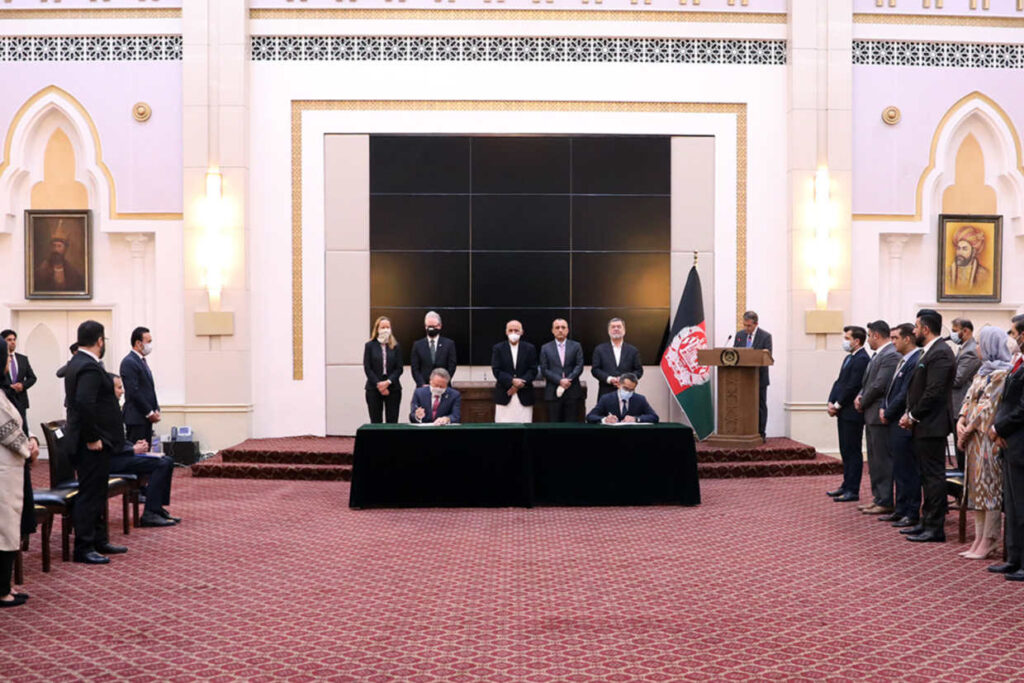
According to Fortescue, the agreement was to “undertake studies for the development of hydropower and geothermal projects for green industries, as well as studies across a range of mineral resources.” It was a comprehensive agreement designed to potentially exploit resources in at least half of the provinces in Afghanistan. Forrest has travelled the world exploring and promoting the viability of large hydropower projects.
The deal
As soon as the deal was made, mining experts and lawyers raised questions about how it was struck, why there was apparently no bidding process in breach of the Afghan law, and why an Australian company would be granted exclusive survey rights until 2025. They asked why the US-backed regime in Kabul had so readily backed Fortescue.
Declassified Australia has learned that on 9 September 2020, the day before Forrest formally signed the agreement in front of the cameras in Kabul, there were private meetings held in the presidential palace attended by Forrest and his team.
A former Afghan government employee who was present in one of the meetings has detailed them to Declassified Australia. He’s requested anonymity due to threats to his safety but his identity has been verified. It’s the first time he’s ever revealed these details.
There were Afghan officials from three departments in the meeting. Ata Nasib was the Director General of the Investment Facilitation Unit, Kabir Khan Isakhel was a legal advisor to President Ghani and Chakhansuri was the Minister of Mines.
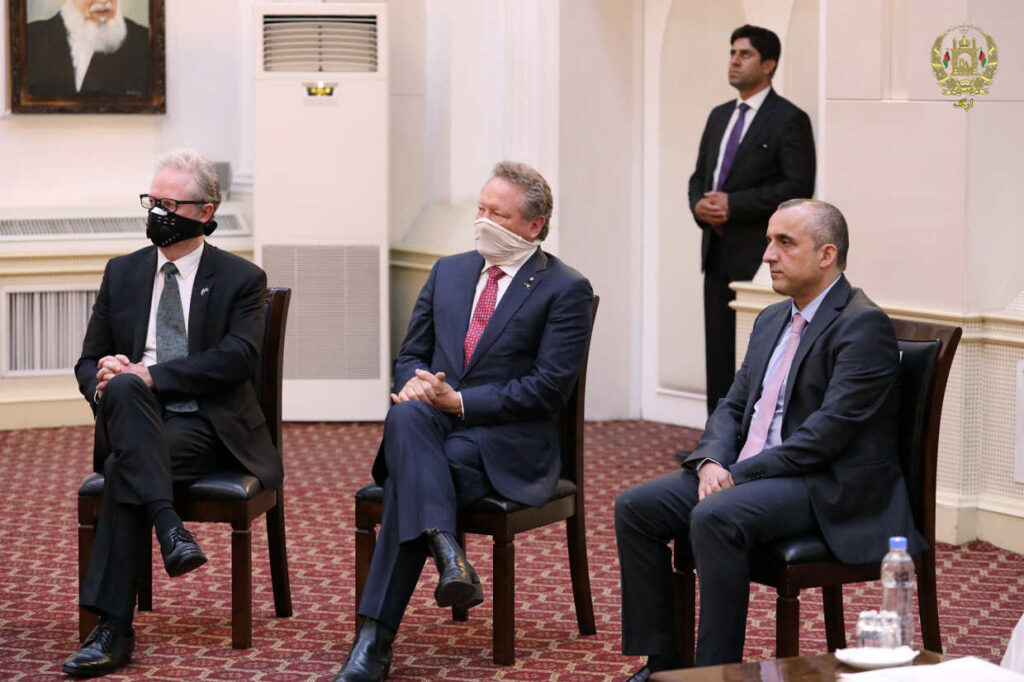
According to our inside source, the text of the agreement signed the next day was drafted by these three individuals despite legal and contractual issues in granting so much of the country’s resources to Fortescue alone. There had been no public consultation or open bidding process, a clear breach of the country’s mining law, according to legal experts. Fortescue was being granted uncontested a huge swathe of mineral-rich Afghanistan with the stroke of a pen.
Alongside the mining contract, Fortescue signed on the same day separate agreements with different government departments on public health, higher education, hydropower and the Red Crescent. Declassified Australia has sighted photos of these signing ceremonies, all of which include Andrew Forrest and heads of different Afghan departments.
Our insider said that he believed Fortescue, by trying to secure Afghan resources worth as much as US$4 trillion, ‘wanted to act like the East India Company, and take control of all the country’s minerals and make the Afghan people dependent on them forever’.
Forrest and his team were informed that development of the Hajigak iron ore mine, the largest of its kind in the country and 130 kilometres from Kabul, was already contracted to India in 2011. New Delhi wanted to re-negotiate in 2013 due to growing security concerns in the previously peaceful province of Bamiyan.
According to our insider, the Fortescue delegation was told that the presence of the Indian deal would be no problem, they could survey Hajigak, and officials would cancel the deal with the Indians.
Fortescue was promised access to an area north of the Aynak copper mine in Logar province, the heartland of the insurgency. The Aynak contract had already been signed with two Chinese companies in 2007 but it remains mired in problems to this day. Beijing is again currently eyeing the possibility of exploiting what is potentially the world’s largest copper deposit at Aynak.
At the conclusion of the meeting, some members of the Fortescue team were taken on a helicopter trip over the Afghan countryside to view potential mine and dam sites. It was one of President Ghani’s personal helicopters. There were no US military escorts but the flight was escorted by Afghan presidential palace and ministry of defence forces. The helicopter didn’t land during the trip and arrived back at the presidential palace in Kabul.
Declassified Australia has obtained several photos from this trip and are publishing them here for the first time. They were taken by our source who was on the helicopter visit. One photo, he tells us, shows two Fortescue executives looking from the helicopter windows at the countryside below.
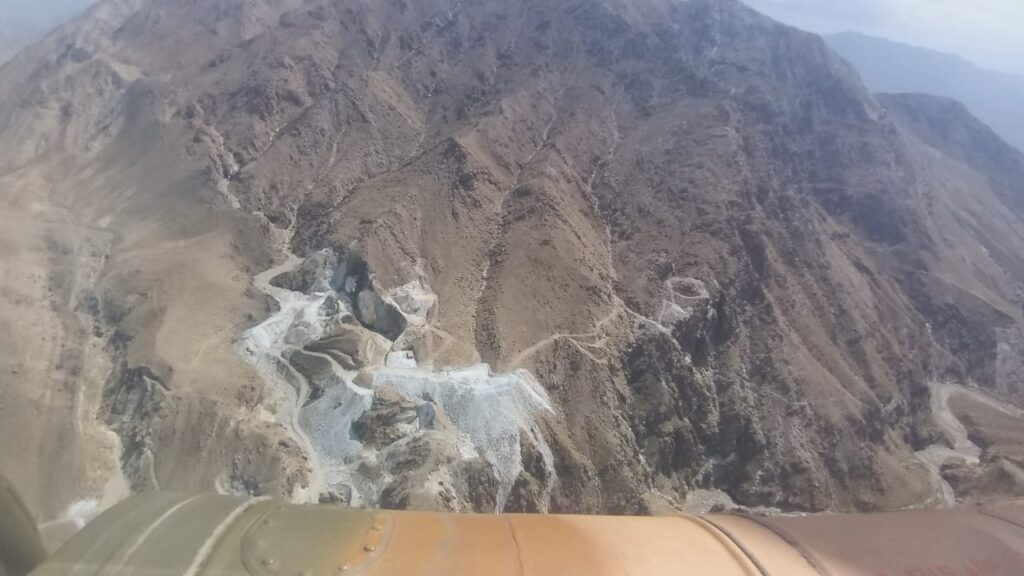
The insider described that the helicopter travelled over the Panjshir valley, Kapisa province and Kunar river and finally over the Aynak copper mine. The main purpose of the trip was to see water dam opportunities in these areas because the construction of hydropower facilities was a key Fortescue priority. One photo over Kapisa province shows a talc mine, a valuable industrial resource used in lubricants and ceramics.
After the Taliban seized power in August 2021, Forrest said that, ‘we would meaningfully engage with anybody, including the Taliban, if they guaranteed equal education outcomes for girls and boys’. Declassified Australia understands Fortescue’s work in Afghanistan is currently ‘on hold’.
Fortescue declined to comment to Declassified Australia when sent questions about the company’s activities in Afghanistan. Afghan Minister of Mines Mohammed Haroon Chakhansuri who, along with his brother, have left Kabul and are now living in Sydney, have both ignored repeated requests for comment via email and direct message.
Nailing the worldwide lithium market
The reason behind Fortescue’s fascination with Afghanistan is clear. Australia is one of the world’s biggest lithium producers with much of the raw mineral being shipped to China. With the growing Cold War between Beijing and Washington, and Australia being drawn into this dangerous geo-strategic rivalry, Fortescue wants to have a monopoly on lithium and other rare earth elements. The aim is to control these markets and ensure that the resources don’t overly fall into the hands of China, India and the Arab states.
Australia is in the middle of a global battle over rare earths, lithium and cobalt. The Canadian government recently ordered three Chinese companies to divest from critical resources projects, citing national security concerns.
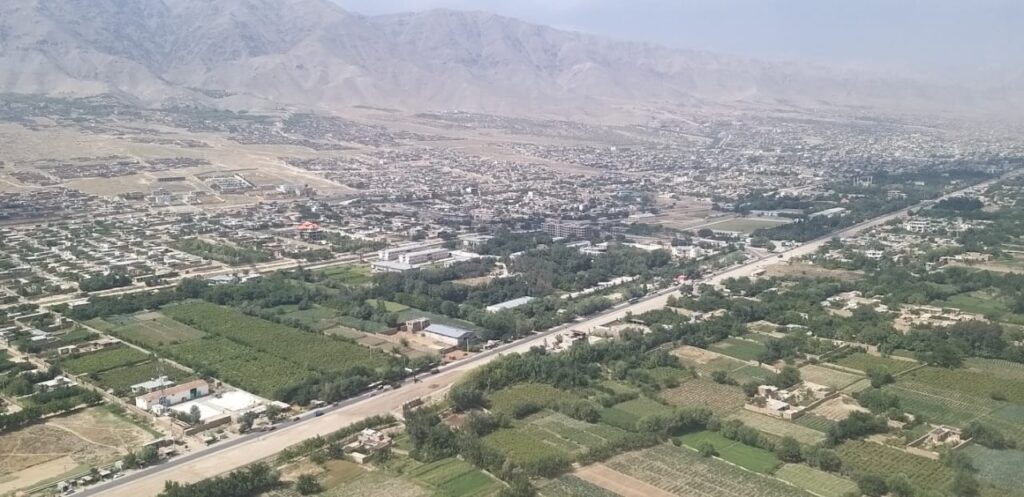
The Australian Albanese government is openly pushing for a new mining boom on these shores. Treasurer Jim Chalmers recently outlined his vision. “Critical minerals could be the opportunity of the century,” he said. “This is a generational opportunity that we cannot miss or mishandle.”
The founder of Fortescue Metals Group, a company that’s made billions of dollars by mining iron ore, is experiencing a renaissance as an environmental ‘hero’. He travels the world talking about ending the planet’s reliance on fossil fuels. He’s opposed to the nascent seabed mining industry. He pushes his fellow corporate elites to join him in dumping polluting industries.
Forrest attended the recent COP27 climate talks in Egypt, where he met Egypt’s dictator Abdel Fattah El-Sisi in September, praising his green credentials. Forrest explained that he is investing huge amounts of resources into building solar farms to produce green hydrogen. The media laps up his message, offering him mostly uncritical coverage (though some stories are raising doubts).
An Afghan government mining ministry spokesman Esmatullah Burhan recently said that lithium mining is currently off-limits for Afghanistan due to the complexity of its extraction. He said that he wouldn’t expect lithium contracts to start before 2032.
“There are other minerals we talk about first — coal, chromite, nephrite, gemstones, marble”, he explained. “Because lithium is a material that all nations need, we will leave it till after these are expended, for the long term.”
The future of Afghan billions in resources is up for grabs. Corruption however remains a big concern despite the new Taliban government’s claims of improved propriety.
Beijing has a massive appetite for cobalt and lithium. With the defeat and withdrawal of the Western occupiers in 2021, China is looking to be the most likely winner in future mining negotiations with the Taliban government.
The Islamist rulers of Afghanistan may remain pariahs in most of the world, but their resources remain a lure.
BEFORE YOU GO: We’re asking you to support us as we continue the mission of producing new, original investigative journalism. You can subscribe to DECLASSIFIED AUSTRALIA using our Patreon site. Thanks!
